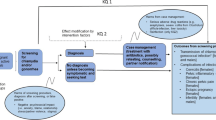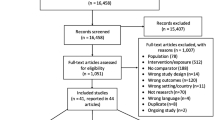Abstract
Objective: To gain insight into the variation in physicians’ clinical decisions and further understand the factors that influence physicians’ thresholds for testing and treating.
Design: Written clinical scenarios were mailed to two groups of physicians who were asked to provide probability estimates of syphilis, how these estimates might change with new information, and when a diagnostic test would be ordered or treatment begun. A model was then used to calculate the probabilities at which physicians ordered tests or initiated treatment.
Participants: Group 1 comprised 126 board-certified internists from metropolitan Philadelphia responding from a sample of 360 such physicians randomly selected from a directory. Group 2 consisted of 31 experts in sexually transmitted disease responding from a sample of 50 experts selected by the authors.
Measurements and main results: Experts were willing to obtain a serologic screening test at a lower likelihood of syphilis (0.013%) than were internists (0.034%), and they were willing to obtain a lumbar puncture at a lower likelihood of neurosyphilis (0.165%) than were internists (0.393%). The difference in the groups’ thresholds to begin neurosyphilis treatment was not significant. A multivariate model showed that group differences were created by individual characteristics (years in practice, subspecialty board certification, and full-time nonacademic practice) that were associated with higher thresholds for serologic screening.
Conclusions: There are differences in the diagnostic testing practices for syphilis between national experts and internists. Although status in one of these groups alone did not predict the threshold for obtaining syphilis tests, certain individual characteristics were predictive. Examination of physician characteristics helps to explain the variation observed in their practice patterns, and determination of physicians’ thresholds aids in analyzing these variations.
Similar content being viewed by others
References
Wennberg JE, Gittelsohn A. Variations in medical care among small areas. Sci Am. 1982;246:120–34.
Wennberg JE, McPherson K, Caper P. Will payment based on diagnosis-related groups control hospital costs? N Engl J Med. 1984;311:295–300.
Eisenberg JM. Doctors’ decisions and the cost of medical care. Ann Arbor, MI: Health Administration Press, 1986.
Pauker SG, Kassirer JP. Therapeutic decision making: a cost-benefit analysis. N Engl J Med. 1975;293:229–34.
Pauker SG, Kassirer JP. The threshold approach to clinical decision making. N Engl J Med. 1980;302:1109–17.
Eisenberg JM, Hershey JC. Derived thresholds: determining the diagnostic probabilities at which clinicians initiate testing and treatment. Med Decis Making. 1983;3:155–64.
Eisenberg JM, Schumacher HR, Davidson PIC, Kaufman L. Usefulness of synovial fluid analysis in the evaluation of joint effusions: use of threshold analysis and likelihood ratios to assess a diagnostic test. Arch Intern Med. 1984;144:715–9.
Young MJ, Eisenberg JM, Williams SV, Hershey JC. Comparing aggregate estimates of derived thresholds for clinical decisions. Health Serv Res. 1986;20:763–80.
Wiesel J, Rose DN, Silver AL, Sacks HS, Bernstein RH. Lumbar puncture in asymptomatic late syphilis: an analysis of the benefits and risks. Arch Intern Med. 1985;145:465–8.
Dans PE, Cafferty L, Otter SE, Johnson RJ. Inappropriate use of the cerebrospinal fluid venereal disease research laboratory (VDRL) test to exclude neurosyphilis. Ann Intern Med. 1986;104:86–9.
Lukehart SA, Hook EW, Baker-Zander SA, Collier AC, Critchlow CW, Hansfield HH. Invasion of the central nervous system byTreponema pallidum: implications for diagnosis and treatment. Ann Intern Med. 1988;109:855–62.
Eisenberg JM, Nicklin D. Use of diagnostic services by physicians in community practice. Med Care. 1981;19:297–309.
Wallsten TS. Physician and medical student bias in evaluating diagnostic information. Med Decis Making. 1981;1:145–64.
Tversky A. Kahneman D. Judgment under uncertainty. Heuristics and biases. Science. 1985;1:1124–31.
Author information
Authors and Affiliations
Additional information
Received from the Section of General Internal Medicine (Department of Medicine), Department of Decision Sciences and the Leonard Davis Institute of Health Economics, University of Pennsylvania, Philadelphia, Pennsylvania, and the Section of General Medicine (Department of Medicine), Medical College of Wisconsin, Milwaukee, Wisconsin. Dr. Winkenwerder is currently with the The Prudential/PruCare Southern Group Operations, Atlanta, Georgia.
Supported in part by the National Center for Health Services Research (Grant#HS 04953) and the Henry J. Kaiser Family Foundation.
Rights and permissions
About this article
Cite this article
Winkenwerder, W., Levy, B.D., Elsenberg, J.M. et al. Variation in physicians’ decision-making thresholds in management of a sexually transmitted disease. J Gen Intern Med 8, 369–373 (1993). https://doi.org/10.1007/BF02600075
Issue Date:
DOI: https://doi.org/10.1007/BF02600075




